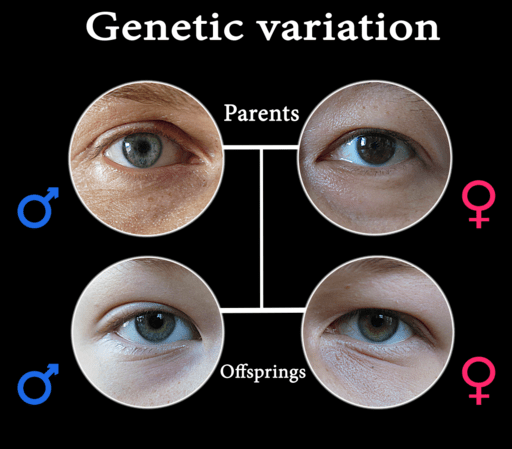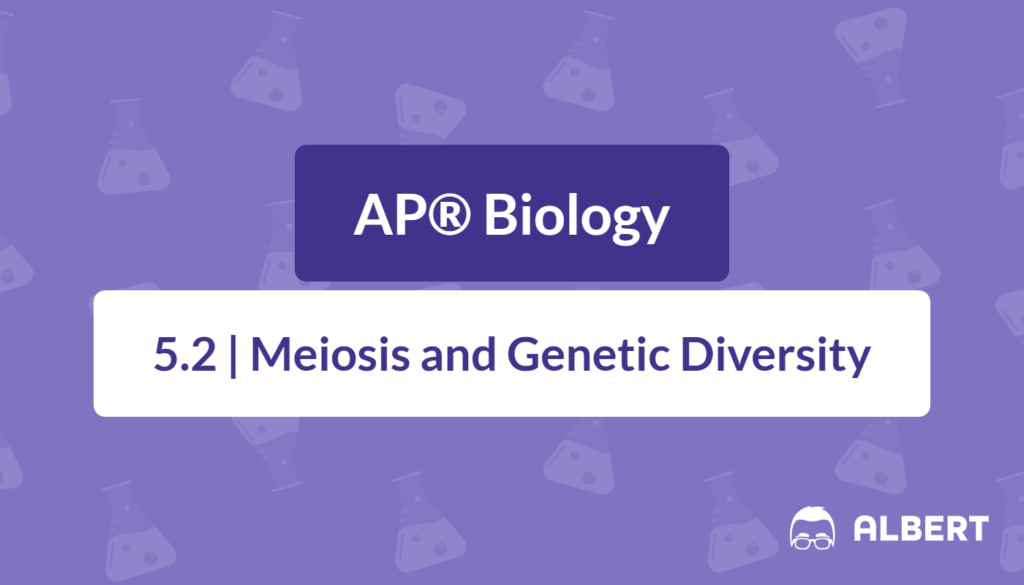What We Review
Introduction
Genetic variation is the foundation upon which evolution and biological diversity are built. In this post, we’ll explore how genetic variation arises and why it’s so critical for thriving populations. We’ll also emphasize meiosis—an essential process for generating variation—and highlight the concepts that are most relevant for the AP® Biology exam. Let’s dive in!
What is Genetic Variation?
Genetic variation refers to the differences in DNA sequences among individuals within a population. These variations often manifest in observable traits known as phenotypes. The specific combination of alleles (variants of a gene) in an organism constitutes its genotype. Genetic variation is critical because it:
- Provides a “toolbox” of traits that can help populations adapt to changing environments.
- Evolution is driven by natural selection, where beneficial traits become more common over generations.
The Role of Meiosis in Genetic Variation
Meiosis is a specialized form of cell division that produces gametes (sperm or egg cells). Unlike mitosis—which simply creates identical daughter cells—meiosis halves the chromosome number. This reduction ensures that when gametes fuse during fertilization, the resulting offspring has the correct diploid number of chromosomes.
A. Stages of Meiosis
- Meiosis I: Homologous chromosomes (pairs carrying the same genes) are separated, resulting in two cells, each containing half the total chromosome sets (yet still with duplicated chromatids).
- Meiosis II: The sister chromatids in each cell separate, creating four haploid cells, each with a unique combination of genetic material.
B. Separation of Homologous Chromosomes (IST-1.H.1)
During Meiosis I, homologous chromosomes line up and then separate. If all goes well, each new cell ends up with one chromosome from each pair. Proper separation is vital; errors here can lead to chromosomal imbalances. When separation occurs correctly, the result is a set of gametes primed to contribute to genetic diversity.
Crossing Over and Recombination
During prophase I of meiosis, homologous chromosomes pair up and exchange segments of DNA in a process known as crossing over. This recombination of gene segments increases genetic variation by creating new allele combinations.

- Crossing Over in Action: Imagine two homologous chromatids (one from each parent). During crossing over, these chromatids swap sections, so each chromatid ends up with a mix of maternal and paternal genes.
- Impact on Genetic Variation: The resulting gametes can carry an almost limitless array of genetic variants, making each offspring genetically unique.
A real-life example is the genetic diversity seen in siblings—while they share the same parents, crossing over events mean each child inherits a unique mix of genes.
Random Assortment of Chromosomes
Another way meiosis increases variability is through the random assortment of chromosomes. In Meiosis I, homologous pairs line up randomly. This means any maternal chromosome can pair with any paternal chromosome in a myriad of possible combinations.
- The Mathematical Impact: If an organism has n chromosome pairs, there are 2^n possible ways these pairs can line up and divide.
- Real-World Significance: This random distribution ensures that each gamete has a different set of genetic information—even before crossing over is taken into account.
Advantages of Sexual Reproduction
Sexual reproduction—via meiosis and fertilization—offers significant advantages:
- Enhanced Genetic Diversity: Continuous reshuffling of alleles produces variability that can help populations adapt to their environment.
- Rapid Evolutionary Potential: When environments change, having diverse alleles lets some individuals thrive and pass on beneficial traits.
- Long-Term Population Health: Greater variation reduces the likelihood of harmful mutations accumulating and increases resilience to disease.
Practice Problems
- Draw a diagram of a homologous chromosome pair undergoing crossing-over. Label the exchanged segments.
- Explain how random assortment contributes to the number of potential genetic outcomes in human gametes.
- Compare and contrast meiosis I and meiosis II with respect to the separation of chromosomes and chromatids.
Summary and Conclusion
Genetic variation underpins life’s incredible diversity and adaptability. Through the separation of homologous chromosomes, crossing over, and random assortment, meiosis generates genetically unique gametes. This genetic diversity is amplified in sexual reproduction, fueling evolution and helping populations survive and flourish in changing environments. For the AP® Biology exam—and beyond—understanding these core processes is vital for grasping the dynamics of heredity and evolution.
Always connect these fundamental biological processes to the bigger picture: Genetic variation is essential for the survival and evolution of species. Keep practicing these concepts with diagrams, flashcards, and exercises, and you’ll be one step closer to AP® Biology success!
Sharpen Your Skills for AP® Biology
Are you preparing for the AP® Biology test? We’ve got you covered! Try our review articles designed to help you confidently tackle real-world math problems. You’ll find everything you need to succeed, from quick tips to detailed strategies. Start exploring now!
Need help preparing for your AP® Biology exam?
Albert has hundreds of AP® Biology practice questions, free response, and full-length practice tests to try out.








